Today we will talk about a houseplant, familiar and familiar to the eye of most compatriots. Its bright inflorescences - white, pale pink, bright red - invariably cheer up, decorating the interiors of a huge number of Russian dwellings. Got it?
A few scientific terms
What kind of plant is this - royal pelargonium? Looking into the specialized literature, the reader will find that this beautiful flower is also known by other names. It is called large-flowered pelargonium or royal geranium.
The scientific name of the plant is Pelargonium grandiflorum or Regal Pelargonium. Pelargonium belongs to the Geraniaceae family. It grows, as a rule, no higher than 25-50 cm.
This plant has gained wide popularity as a ubiquitous indoor house flower. This is explained by the presence of a long flowering period and the inherent unpretentiousness in care. Amateur flower growers succeed in propagating royal pelargoniumquite easy and effective thanks to the use of cuttings.
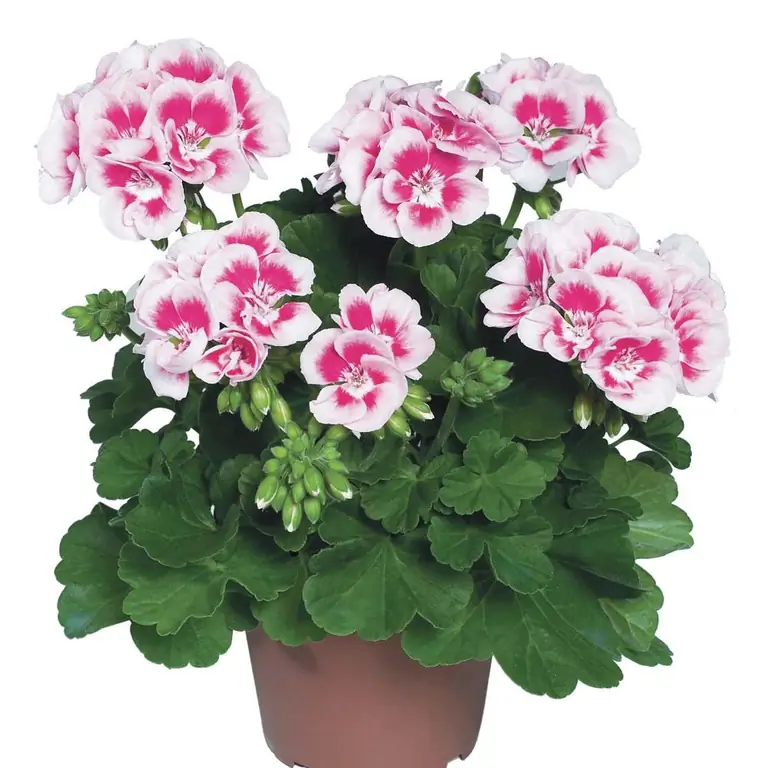
What kind of flower is this?
Europe got acquainted with geraniums around the middle of the 18th century. The first samples and seeds of royal pelargonium were brought to the inhabitants of the European continent from South Africa. Based on them, a variety of new varieties were subsequently bred. Breeders of that time, among other species, created large-flowered royal pelargonium, the main decoration and distinctive feature of which were beautiful large flowers.
Such a plant usually looks like a small compact bush, which is essentially a hybrid. If you grow a bush at home, it comes out small, dense and incorporating several branching fragile stems.
The leaves of the royal pelargonium can be of various shapes and sizes, depending on its variety. The length of the geranium petioles is approximately equal to the length of the leaf blades. A number of varieties of pelargonium have rounded leaves, the edges of which are slightly lobed.
What do royal pelargonium flowers look like
Geranium flower grows on a thin long stem covered with spherical umbrellas. Sometimes you can see a single large flower of bright color. Pelargonium color (again, depending on its variety) can be white or one of the many shades of red or pink.
If royal pelargonium is grown at home, it usually turns out to be quite undersized. Leaves at the topits part - a rough texture, having jagged outlines. Their shape is wavy along the edges.
Most of the varieties of plants grown indoors have cone-shaped flowers in the order of 10 pieces. They appear at the tips of young branches or from stems. The inner region of the petals is most often a darker shade. The outer part is often decorated with dark lines.
If the owner of the plant provides proper quality care for the royal pelargonium, he will rightfully be able to enjoy its flowering from early spring until the end of summer.
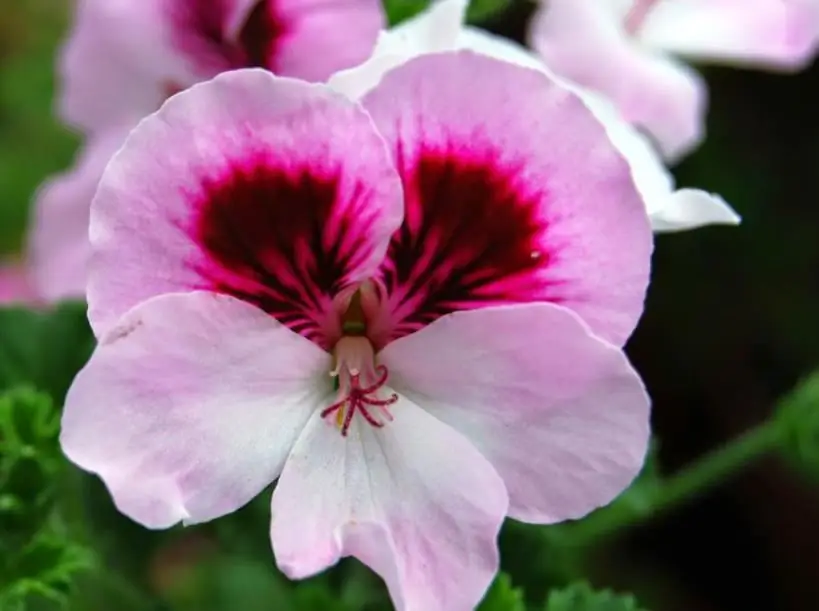
Pelargonium: care features
Normal development of a plant at home is impossible without creating favorable conditions for it. The flower will feel most comfortable when placed in a space full of fresh air. Some owners grow geraniums not only indoors (room). This flower can be planted on a balcony, in a garden or on a terrace closed from rain and wind.
If you place the plant pots on the windowsill, make sure there is ventilation for it. This is due to the fact that the plant needs not only the optimal temperature, but also a certain humidity.
Light conditions
As for the level of illumination, the requirements for geraniums to their owners are as follows:
- Lighting should be maximum. At the same time, in the summer, the plants must be partially shaded. For those specimens that are grown outside the home, it is necessaryprovide shelter from atmospheric precipitation. An indispensable condition is the presence of protection from direct sunlight.
- In winter, the place where pelargoniums are grown should be lit and cool enough, with a constantly maintained temperature of 10-14 degrees Celsius. Only in this case the plant forms ovaries.
How to water royal geraniums
The presence of proper and regular watering is a necessary condition for the normal growth and existence of the plant. In summer, watering is carried out twice during the day. The first time - at about 10 am, the second - in the evenings, after sunset. In winter, a single watering daily is enough for the plant.
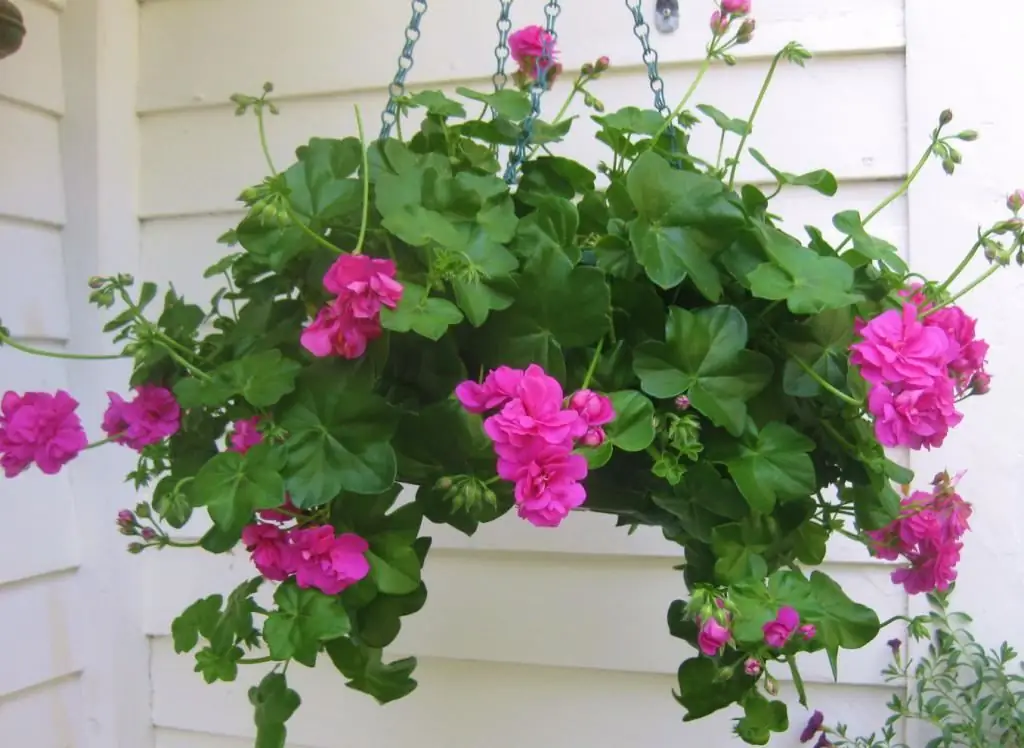
When it comes to caring for a hybrid of royal pelargonium, a number of features should be taken into account. These plants are oriented towards a slightly higher temperature and a slightly higher water flow. When irrigating adult bushes, a certain scheme should be followed: more than 50 ml of water should not be poured at a time.
The soil should be lightly soaked, but excess moisture should be avoided as rot and infection are more likely to occur. It is here that most often lies the answer to the question of why royal pelargonium does not bloom at home.
Let's talk about temperature
The optimum temperature for growing pelargonium is 18-25 degrees Celsius. It is not recommended to exceed it. The plant can be seriously damaged by drafts. In order to avoid all these troubles, flower growers are recommendedget the necessary instruments: a thermometer and a hygrometer, and sometimes a weather station.
When the plant "falls asleep"
From October to March, the royal pelargonium is at rest. The main thing at this time is to prevent the earthen ball from being overdried. Particularly difficult care at this time of the year the flower is practically not needed. In advance, before it enters the dormant stage, weak leaves should be cut off. The remaining flowers and shoots are cut in length by a third.
These measures are designed to provide the flower with the maximum opportunity for future growth and oxygen. Another definite plus of the pruning procedure is the improvement in resistance to pests and diseases. Pelargonium should be watered at this time only when the situation requires it. The temperature during the winter "hibernation" should be maintained around 10-14 degrees Celsius.
Sometimes individual flower growers do not have the time or the right place for normal plant care in the winter. In this case, the following measure can be recommended: remove all plants from pots, shorten their leading shoots, clean the root ball of each plant from dirt and lightly trim the roots.
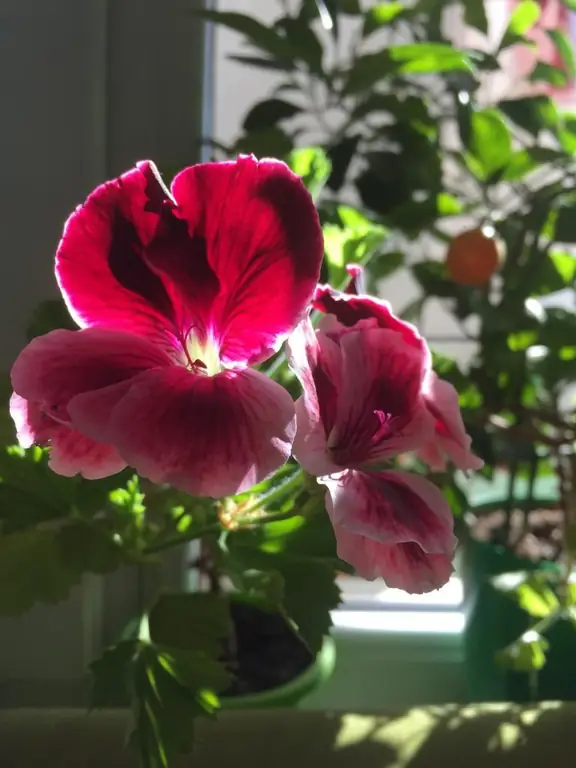
Then, all the plants are individually wrapped in newspaper and wrapped with foil on top, after which they are tied up and hung in the basement. In this case, you will be relieved of the need to care for the flower throughout the long winter.
In March, the pelargonium should be taken out of the packages and planted back inpots.
Royal pelargonium: pruning and fertilization
Throughout the entire period when the growing season occurs, the soil for the flower needs liquid fertilizers. The frequency of this procedure is once every couple of weeks. It is not necessary to fertilize during the winter period (October-February), when the plant is at rest.
Let's mention again that the small compact bushes of this plant bloom most abundantly in comparison with those that have grown. Sometimes old lignified shoots form new branches. If your plant has been grown for a number of years, it should be pruned no more than once a year. In this case, the time of the procedure is not critical.
About the reproduction of pelargonium
If you want to get a new bush of this beautiful plant at home, you should know the reproduction features of royal pelargonium. The technology of the process is approximately the same for all its varieties. Knowledgeable flower growers do not recommend using royal pelargonium seeds for this. The grafting method has proved to be much more reliable.
How is it done? Cuttings are harvested in autumn or in the first weeks of summer. They are cut at an angle of 45 degrees below the internodes. Shoots belonging to dwarf varieties are separated at a distance of about 5 cm. For larger varieties, this value is 10 cm.
Having received ready-made cuttings, cut flowers and lower leaves from them. The soil should not have high humidity, otherwise the plant may rot. That is why the cuttings should be handled quite carefully. Behinda few days before landing, placing them in the aquatic environment should be discarded. Sometimes drying each cutting for about two hours gives a good effect. Before this, the cuts are treated with charcoal.

What to do next
To get a new geranium bush at home, stock up on a suitable pot of not very large diameter. Lay drainage at the bottom - clay shards that fill the pot in its lower part are suitable as it. A soil mixture consisting of an equal amount of sand and peat is placed on top, then everything is thoroughly watered.
After that, pre-prepared cuttings of royal pelargonium are planted. Do not plant them in too wet or, conversely, very dry soil. Immediately after the planting procedure, watering should be carried out only along the edges of the pot.
What happens next
As a rule, all shoots prepared in advance, planted in a pot, take root in it quickly enough. This explains the popularity of the method of propagation of royal geraniums by cuttings. Normally, the first shoots can be expected after 3-4 weeks. Having found them, you should slightly increase the degree of watering. But this should be done as carefully as possible to avoid soaking the substrate.
After another four-week interval, you should start hardening young bushes of royal pelargonium in the sun. Further care for them practically does not differ from that which is carried out in relation to adult specimens of the plant. When the root system is formedwell enough, geraniums can be transplanted into soil prepared from compost.
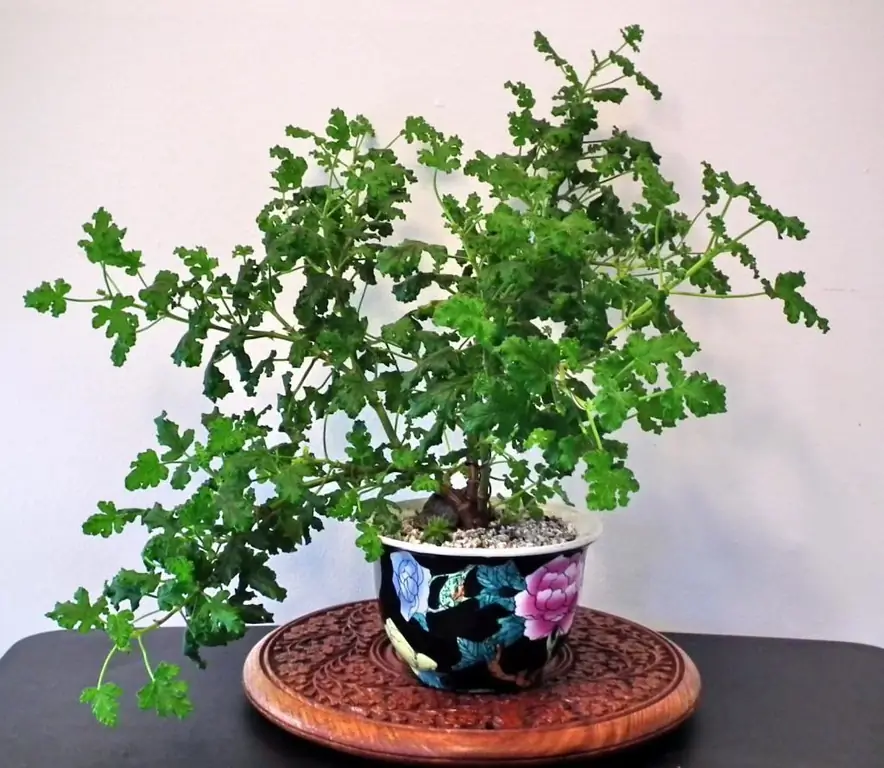
Replanting the plant
Royal geranium is a fairly compact plant even with a large number of leaves and flowers. Growing root shoots can fill and even completely clog drainage holes. Sometimes this is the reason for the lack of flowering of pelargoniums in room conditions.
Replant geraniums should be no more than once every 2 years. In this case, the earthen substrate must be replaced with a fresh one. The rhizome is cleaned of soil by shaking it slightly, then about half of it is removed by pruning thick long roots and excess shoots. After that, the plant is returned to its original pot, pre-filled with fresh soil.
It is best to transplant in the spring. But if you missed it, it's okay - if necessary, you can do this in other periods related to the growing season of the plant.
Let's talk about pests
The most dangerous and most common disease of royal geranium is called black leg. Its sign is the stems of the plant painted black at ground level. You should carefully monitor the flower, as the disease can spread quickly and affect the entire plant.
The reason for it is most often too high humidity or waterlogging of the soil. To prevent this trouble, you should take care of the optimal conditions for the development of royal pelargonium, including relative drynessair.

Another problem with geraniums is rust. Affected leaves turn yellow and subsequently die. In addition to leaves, flowers with shoots are also susceptible to this disease. That is why, having found signs of rust on the leaves of the plant, one should immediately cut off those that were affected. Such a measure serves as an effective prevention against the spread of this unpleasant disease.
Well, now all our readers know that under this luxurious name, many of us are hiding the familiar indoor geranium. A plant familiar to everyone can effectively decorate not only the windowsill of an apartment, but also an open balcony or garden plot.
If you take care of creating favorable conditions for the growth of pelargonium, you will be rewarded for your efforts. Otherwise, it will be problematic to wait for this unpretentious beauty to bloom.






